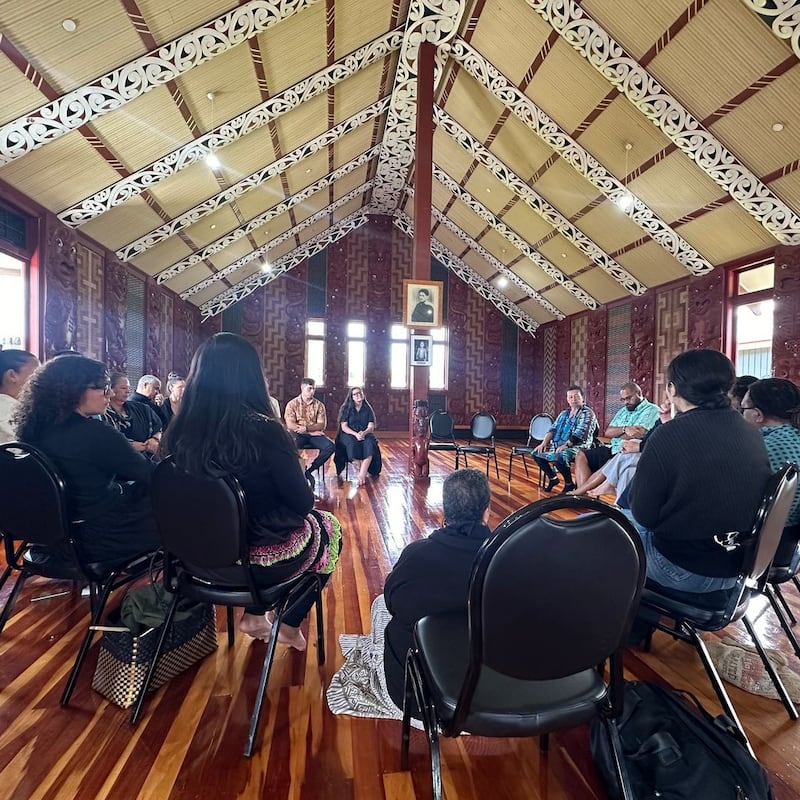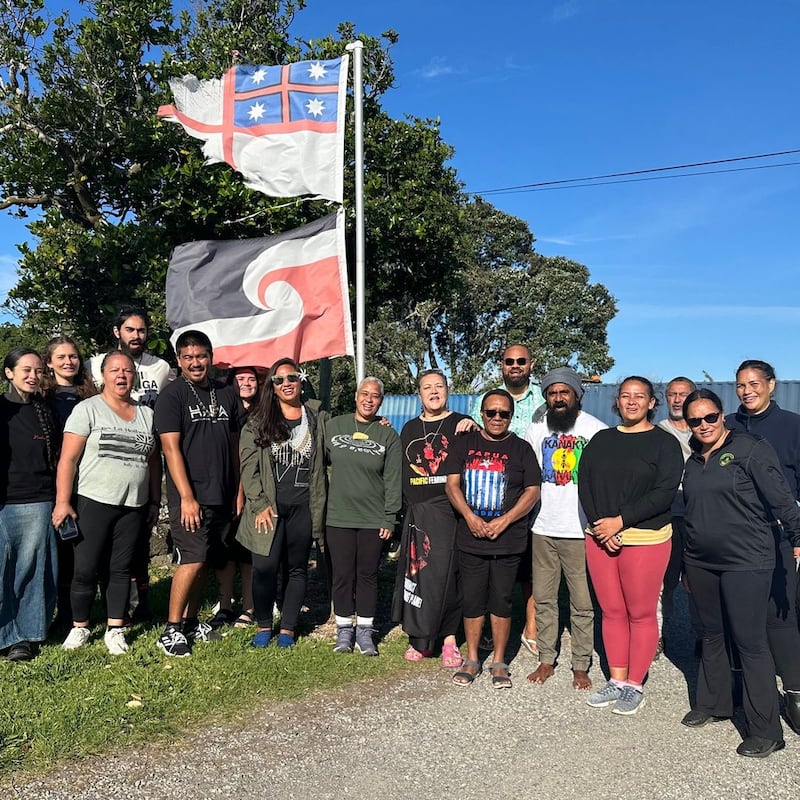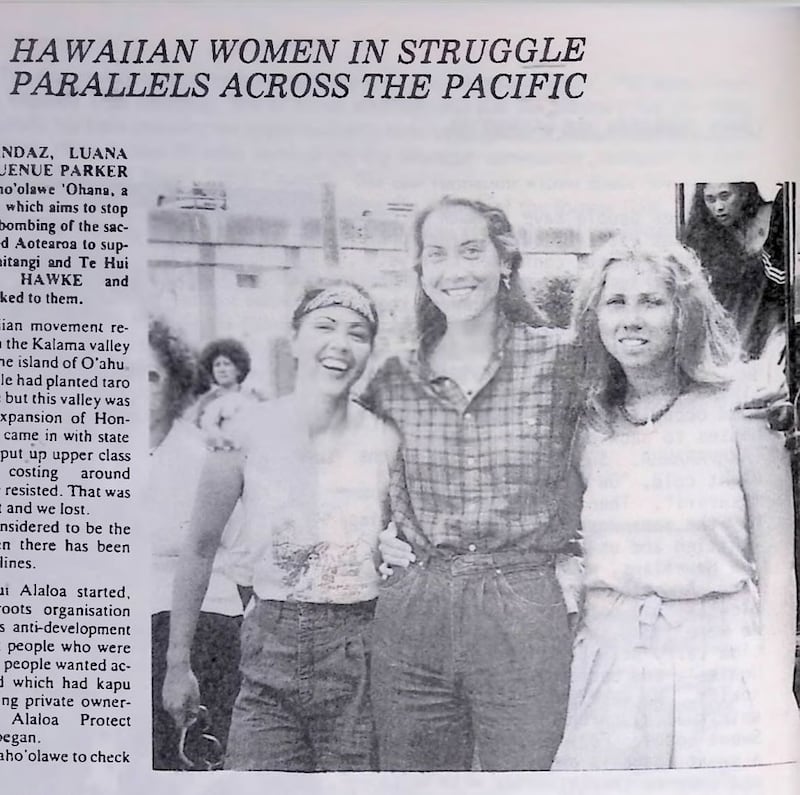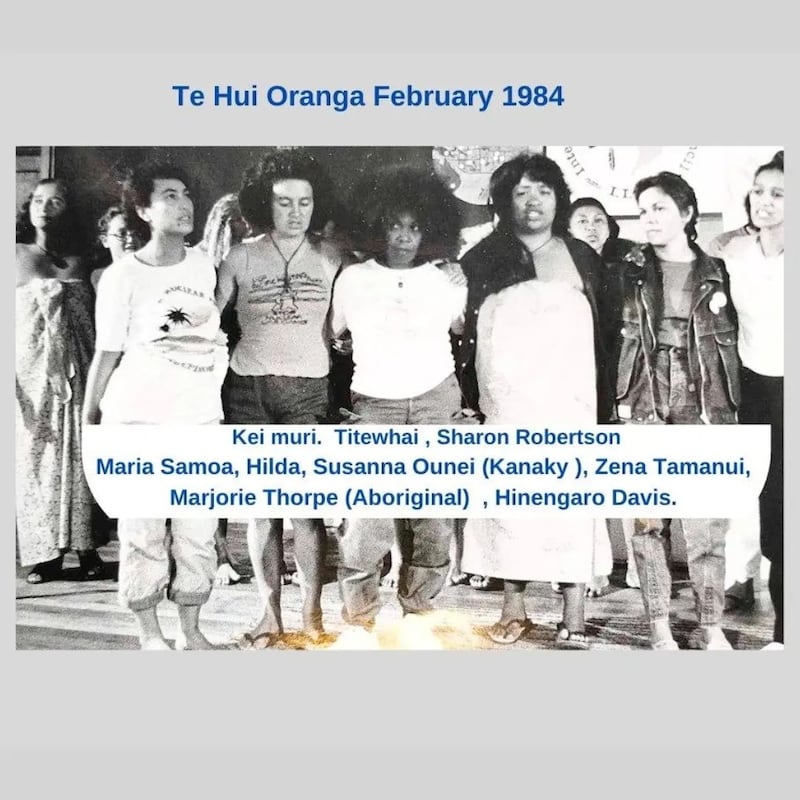Forty years have passed since the first Te Hui Oranga o Te Moana nui a Kiwa which brought Māori into committed solidarity with Pacific peoples and brought the movement for a nuclear-free and independent Pacific home to Aotearoa.
Organisers of the 2024 iteration included Rhieve Grey and Marco de Jong from the group Te Kuaka, who, with the blessing of the movement elders from the 1980s, have reignited the kaupapa in light of new regional issues.
The hui addressed topics such as AUKUS and Fukushima ‘nuclear colonialism’, the militarisation of the Marianas and Hawaii, indigenous rights breaches in Kanaky and West Papua, and ecological issues like climate breakdown and deep sea mining.

Te Hui Oranga 2024 had two parts, the first where guests had a haerenga beginning at Hoani Waititi Marae and a visit to Ihumātao where they learned about the land struggle, listened to the history and pūrākau and planted taro in the whenua there.
Following that, manuhiri stayed in Whāingaroa with Angeline and Hineitimoana Greensill, the daughter and granddaughter of Eva Rickard who led the 1978 golf course protest and a significant figure in the Māori land rights struggle.
The manuhiri included Epeli Lesuma and Noelene Nabulivou (Fiji), Leianuenue Niheu, Joy Lehuanani Enomoto and Bronson Kainoa Azama (Hawaii), Hinamoeura Morgant-Cross (Māohi Nui), Rosa Moiwend (West Papua), Billy Wetewea (Kanaky), Sheila Babauta (Mariana Islands), and Akeina Tairea (Cook Islands).

The group learned about the land struggle in Whāingaroa and the different movements Eva Rickard was part of, they did waka ama to connect to the ocean, went swimming, planted native plants in the sand dunes for climate resilience, and workshopped and constructed The Declaration of Whāingaroa, which covered Pacific regional issues.
The week concluded at AUT’s Ngā Wai o Horotiu Marae where they met media and politicians and the weekend was a conference open to the public where the manuhiri and other speakers discussed militarisation, decolonisation and ecological justice.
The origins of the Hui Oranga
In 1980 the Pacific People’s Anti-Nuclear Action Committee was set up by Hilda Halkyard-Harawira and Grace Robertson, and in 1982 the first Hui Oranga was held at Tātai Hono Marae.

This year’s Hui Oranga has been two years in the making and emerged from conversations within the Aotearoa indigenous caucus of #CancelRIMPAC and came from a call by the late Titewhai Harawira.
Harawira said in the 1970s the kōrero was around asserting that Māori did not support the nuclear bomb, which at the time was the greatest threat to the moana.
“We have lost so many people in the struggle for a nuclear-free and independent Pacific but I’m so pleased that others have stepped up and said we have got to speak up, we have got to shout out,” Harawira said in July of 2022.

“It’s no use having quiet little meetings. We have got to stand up as a nation. Our safety comes from unity as First Nations people.
“I am so grateful that I am still here to hear that strong Pacific voice say enough is enough, we‘ve been there, done that, and we’re not going to allow this to happen again. Kia kaha, you have to be prepared for the long haul.”


